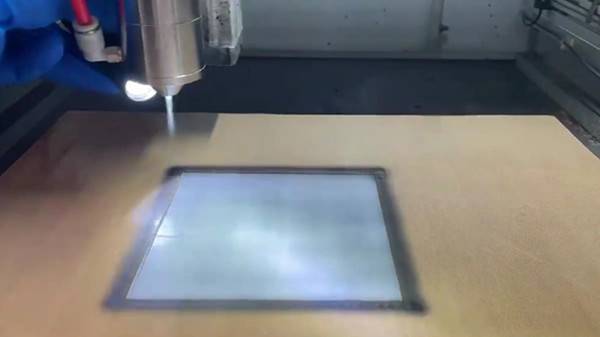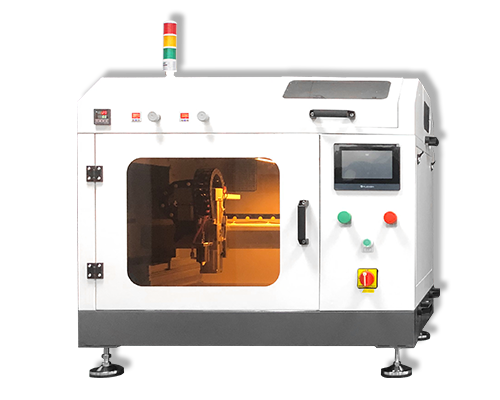Principle of Hydrogen Production by Water Electrolysis
The principle of hydrogen production by water electrolysis is based on the electrochemical process. The following is a detailed explanation:
1. Basic electrochemical concepts
Before understanding the principle of hydrogen production by water electrolysis, you need to master several key electrochemical concepts:
- Electrode: The electrolysis process occurs in an electrolytic cell. There are two electrodes in the electrolytic cell, namely the cathode connected to the negative pole of the power supply and the anode connected to the positive pole of the power supply. The electrode plays the role of providing or accepting electrons in the electrolysis reaction and is the place where the chemical reaction occurs.
- Electrolyte: In order to make water conductive and smoothly undergo electrolysis, some electrolytes are usually added to the water. For example, potassium hydroxide (KOH) or sodium hydroxide (NaOH) solutions are commonly used in alkaline water electrolysis to produce hydrogen, and there are also specific supporting electrolytes in proton exchange membrane water electrolysis to produce hydrogen. The ions in the electrolyte can move in a directional manner under the action of the electric field, conduct current, and ensure that the electrolysis process continues.
- Redox reaction: The electrolysis reaction is essentially a redox reaction. Oxidation occurs at the anode, and the substance loses electrons; reduction occurs at the cathode, and the substance gains electrons. These two electrode reactions cooperate with each other to complete the entire electrolysis process.
2. Principles of different water electrolysis hydrogen production technologies
- Principle of alkaline water electrolysis (AWE)
– Electrolyte and ion behavior: Taking potassium hydroxide (KOH) solution as an example, in water, KOH is completely ionized to produce potassium ions (K⁺) and hydroxide ions (OH⁻). Under the action of the electric field, these ions can move freely, potassium ions (K⁺) move to the cathode, and hydroxide ions (OH⁻) move to the anode.
– Cathode reaction (reduction reaction): At the cathode, water obtains electrons to undergo a reduction reaction. Water molecules (H₂O) combine with electrons migrated from the electrolyte, and the reaction formula is: 2H₂O + 2e⁻ → H₂↑ + 2OH⁻. That is, after every 2 water molecules gain 2 electrons, 1 hydrogen molecule (H₂) is generated, and 2 hydroxide ions (OH⁻) are generated at the same time. The generated hydrogen escapes from the cathode, while the newly generated hydroxide ions remain in the electrolyte to maintain the ion balance of the electrolyte.
– Anode reaction (oxidation reaction): At the anode, hydroxide ions (OH⁻) lose electrons and undergo oxidation reaction. The reaction formula is: 4OH⁻ – 4e⁻ → O₂↑ + 2H₂O. That is, after 4 hydroxide ions lose 4 electrons, 1 oxygen molecule (O₂) and 2 water molecules (H₂O) are generated. Oxygen escapes from the anode, and the newly generated water molecules are added to the electrolyte to participate in the subsequent cycle.
– Overall reaction: Combining the reactions at the cathode and anode, the overall reaction equation for hydrogen production by alkaline electrolysis of water is: 2H₂O = power on = 2H₂↑ + O₂↑, indicating that under power on conditions, water is decomposed into two gaseous products, hydrogen and oxygen. - Principle of Proton Exchange Membrane Electrolysis of Water (PEMWE)
– Function of proton exchange membrane: The proton exchange membrane is a key component of this technology. It has a special chemical structure that only allows protons (H⁺) to pass through. On the anode side, water is oxidized and decomposed.
– Anode reaction: Water undergoes an oxidation reaction on the anode surface to generate oxygen, protons (H⁺) and electrons. The reaction formula is: H₂O – 2e⁻ → 1/2O₂↑ + 2H⁺. The generated oxygen is discharged from the anode, while protons can migrate to the cathode through the proton exchange membrane.
– Cathode reaction: At the cathode, protons (H⁺) migrated from the proton exchange membrane combine with electrons to undergo a reduction reaction to generate hydrogen. The reaction formula is: 2H⁺ + 2e⁻ → H₂↑, and the generated hydrogen escapes from the cathode.
– Overall process: The entire process realizes the orderly process of anode oxidation of water to produce oxygen and protons, and protons migrate to the cathode for reduction to generate hydrogen through the selective proton conduction function of the proton exchange membrane. It also follows the overall reaction of water decomposition into hydrogen and oxygen: 2H₂O = power on = 2H₂↑ + O₂↑. - Principle of solid oxide water electrolysis (SOEC)
– Ion migration at high temperature: Solid oxide water electrolysis to produce hydrogen is carried out at relatively high temperatures (generally 600℃ – 1000℃), and its electrolyte is usually a ceramic material, such as yttria-stabilized zirconia (YSZ). Under the action of high temperature and electric field, oxygen ions (O²⁻) in the electrolyte have the ability to migrate and can move in a directional manner from the cathode to the anode.
– Cathode reaction: At the cathode, the input water combines with hydrogen ions that obtain electrons from the external circuit and oxygen ions that migrate from the electrolyte to generate hydrogen. The reaction formula can be simply expressed as: H₂O + 2e⁻ → H₂↑ + O²⁻.
– Anode reaction: At the anode, oxygen ions (O²⁻) react with water to generate oxygen. The reaction formula is: O²⁻ + H₂O → O₂↑ + 2H⁺, and oxygen escapes from the anode.
– Overall reaction manifestation: The reaction coordination achieved by the cathode and anode under high temperature environment with the help of oxygen ion migration also achieves the effect of water being decomposed into hydrogen and oxygen under power, which conforms to the basic chemical change law of water electrolysis: 2H₂O = power on = 2H₂↑ + O₂↑.
3. Summary of the key points of the principle of hydrogen production by water electrolysis
- Regardless of the method of water electrolysis for hydrogen production, the core is to use electricity to drive water to decompose and convert water into two gases, hydrogen and oxygen. And they are all achieved by generating hydrogen through reduction reaction at the cathode and generating oxygen through oxidation reaction at the anode. However, different technologies differ in electrode materials, electrolytes (or electrolytes), reaction conditions, etc., resulting in different specific electrode reaction details, but ultimately follow the same overall chemical reaction equation to achieve the purpose of hydrogen production.
- In the process of water electrolysis for hydrogen production, electrical energy is converted into chemical energy. By reasonably controlling the electrolysis conditions (such as electrode material selection, electrolyte concentration, temperature, current density, etc.), the efficiency of hydrogen production can be improved and energy loss can be reduced, so that this principle can be better applied to actual hydrogen production and meet the needs of many fields such as energy and chemical industry for high-purity hydrogen.
Hydrogen production by electrolysis of water is the most advantageous method for producing hydrogen. Utrasonic coating systems are ideal for spraying carbon-based catalyst inks onto electrolyte membranes used for hydrogen generation. This technology can improve the stability and conversion efficiency of the diaphragm in the electrolytic water hydrogen production device. Cheersonic has extensive expertise coating proton exchange membrane electrolyzers, creating uniform, effective coatings possible for electrolysis applications.
Cheersonic ultrasonic coating systems are used in a number of electrolysis coating applications. The high uniformity of catalyst layers and even dispersion of suspended particles results in very high efficiency electrolyzer coatings, either single or double sided.
About Cheersonic
Cheersonic is the leading developer and manufacturer of ultrasonic coating systems for applying precise, thin film coatings to protect, strengthen or smooth surfaces on parts and components for the microelectronics/electronics, alternative energy, medical and industrial markets, including specialized glass applications in construction and automotive.
Our coating solutions are environmentally-friendly, efficient and highly reliable, and enable dramatic reductions in overspray, savings in raw material, water and energy usage and provide improved process repeatability, transfer efficiency, high uniformity and reduced emissions.
Chinese Website: Cheersonic Provides Professional Coating Solutions



